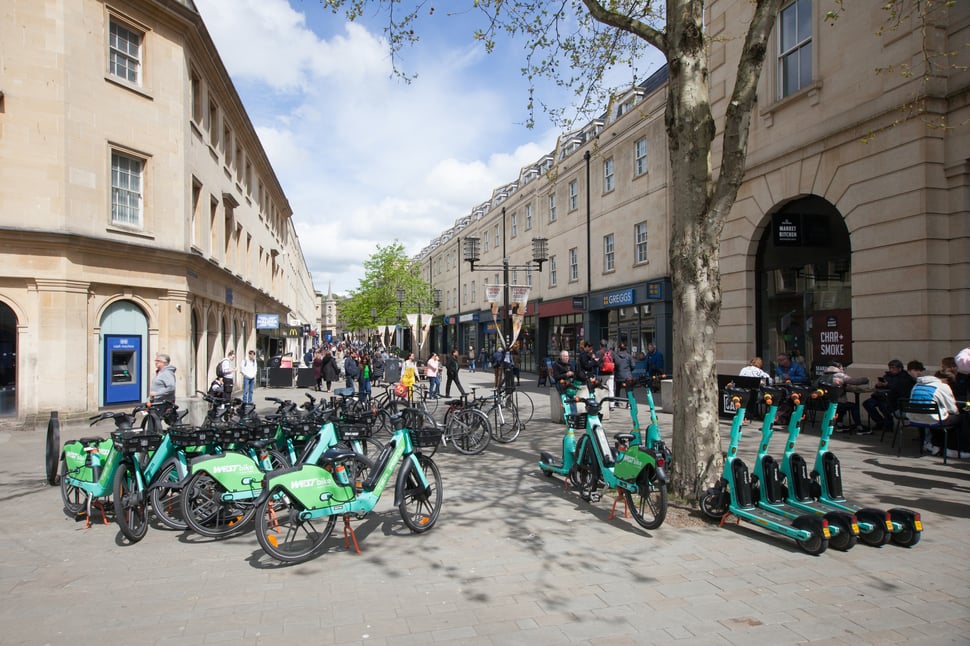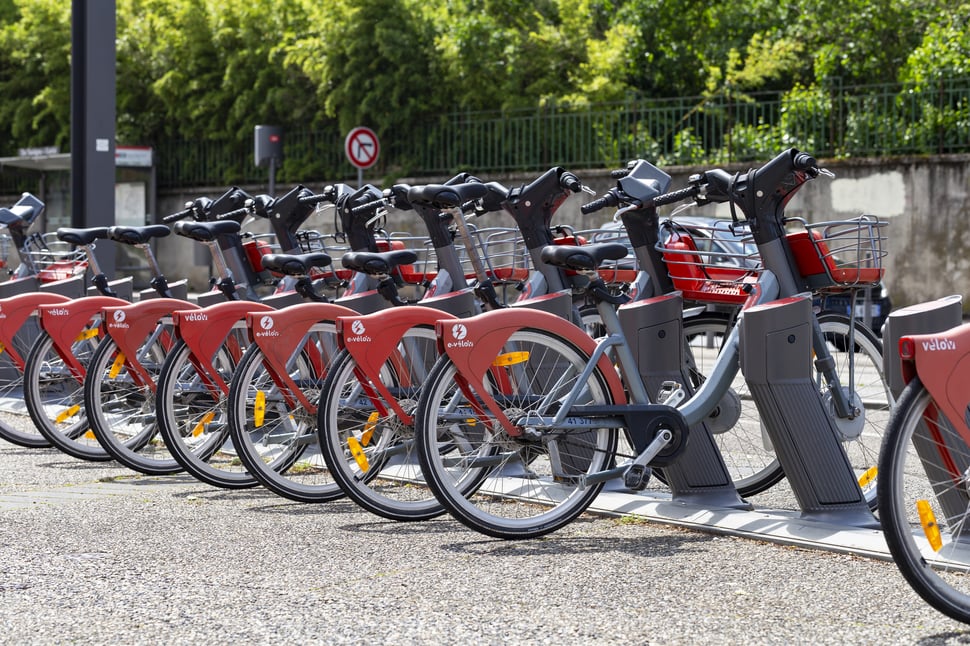It’s probably not a particularly wild assumption to make – at least 50% of the readers of this article have at some point used a micromobility vehicle. You may have rented e-bikes on a family holiday or bought an e-scooter with the notion of zipping to the local shops on it when you’ve run out of milk.
They’re fun, convenient and affordable, by and large, and the advent of shared micromobility schemes across Europe was a given no more than a few years ago. So what happened?
“E-scooters are now legal in the Netherlands, but the notoriously free-thinking major cities haven’t been overly keen, as yet, to welcome them onto the streets.”
A recent RTL Z survey of the eight largest municipalities in the Netherlands revealed that they don’t consider the potential benefits as outweighing the risks, namely the dangers of haphazard parking, or dumping, of the scooters.

(Credit: Ben Molyneux / Dreamstime)
“We’re very concerned about road safety,” said one, while an Amsterdam alderman echoed the sentiment, saying: “This is not a solution, but an additional problem.”
As a prime example of the choppy financial waters that micromobility companies are finding themselves in, only last year Dutch e-scooter sharing firm Felyx was purchased by Spanish counterparts Cooltra for the princely sum of €1.
So is it a case of promise versus reality? Did no-one foresee that a lack of docking stations would lead to the situation that many cities find themselves in, namely street corners awash with swarms of e-bikes, forcing pedestrians to step into the road?
For some years, the vision of cities filled with zipping e-scooters and sleek e-bikes has been sold as a clean, futuristic answer to urban congestion. These shared devices promise an elegant solution to the “last-mile problem,” bridging the gap between transit stops and destinations, reducing car dependency, and cutting carbon emissions.
Cities, operators and users alike are still grappling with the question: how do we make micromobility work for everyone?
The Promise vs. The Reality
Micromobility was supposed to revolutionise commuting. E-scooters and e-bikes, in particular, exploded in popularity between 2018 and 2020, with venture-backed companies like Bird, Lime, and Tier flooding city streets with fleets of rentable devices.
The appeal was undeniable: these vehicles made short trips efficient and often faster than cars stuck in gridlock. For urban planners, they offered a path towards more sustainable cities. For users, they solved the last-mile headache of getting from the metro stop to home or work.
But reality has been a bit bumpier. Injuries rose as inexperienced riders clashed with traffic and pedestrians. Dockless scooters and bikes cluttered the pavements, creating hazards for pedestrians. Maintenance and vandalism costs soared and cities, under pressure to balance innovation with order, introduced new regulations, permits and restrictions that slowed growth.
Docking Stations: The Double-Edged Sword
One of the clearest growing pains is the question of where these vehicles should live when they’re not in use. Early micromobility models leaned heavily on the “dockless” model: users could start and end a trip almost anywhere, thanks to GPS and smartphone unlocking. In practice, that often meant abandoned scooters littering pavements, tipped into gutters, or blocking wheelchair ramps.
In response, many cities have pushed for designated docking stations or painted parking zones. Paris, for example, introduced more than 2000 scooter parking spots in an effort to restore order. New York City’s Citi Bike system, in contrast, has always required riders to return bicycles to docking stations, a strategy that keeps streets tidier but limits the system’s flexibility.
Docking stations solve one problem while creating another. They reduce clutter and make fleets easier to manage, but they also limit availability.

(Credit: Pierre Larcher / Dreamstime)
Charging and Redistribution: The Invisible Challenge
Behind the smart apps and bright paint jobs lies a logistical challenge: batteries don’t charge themselves, and vehicles don’t magically spread across a city where people need them most. Operators employ armies of workers – or in some cases gig-economy “juicers” – to collect, charge and redistribute e-scooters and e-bikes.
This system is expensive, inefficient and often environmentally questionable. ICE-powered vans driving around to pick up scooters may negate some of the promised carbon savings. Docking stations with built-in charging capacity help, but they require costly infrastructure and reliable electricity access. Cities with outdated power grids or dense urban layouts face hurdles in installing enough charging docks to even come close to meeting demand.

(Credit: Kevin Borras)
User Behaviour: Human Nature at Play
While most riders treat shared vehicles responsibly, a vocal minority ignores rules: leaving scooters strewn across pavements, riding on pedestrian-only paths, or doubling up unsafely.
There’s also the “tragedy of the commons” effect. Because the devices are shared, riders may feel less incentive to care for them. Vandalism has been rampant in some cities, with bikes thrown into rivers, set on fire, or dismantled for parts. Operators face rising repair costs, which either get passed on to users through higher prices or undermine the financial viability of the service.
Operators face rising repair costs, which either get passed on to users through higher prices or undermine the financial viability of the service.
Equity and Access
Micromobility also faces criticism that it serves the urban elite more than the populations who need affordable transit the most. Docking stations are often concentrated in wealthier neighbourhoods, leaving transit-poor areas underserved.
For gig workers, who rely on e-bikes to deliver food and goods, the economics can be punishing. Renting a shared e-bike daily is expensive, yet buying a personal e-bike is risky due to rampant theft. Cities have yet to square this circle, though pilot programmes in, for example, New York are testing subsidized e-bike options for delivery workers.
Regulatory Friction
No two cities regulate micromobility in the same way, it would seem. Some welcome it as part of a sustainable future, while others see it as a nuisance or safety risk. Paris recently made global headlines by banning shared e-scooters outright, citing concerns over pedestrian safety and public space misuse. Meanwhile, London allows shared e-scooters only within small, strictly controlled zones.
This patchwork of rules makes scaling difficult for operators, who must constantly adjust fleet sizes, pricing, and logistics. For users, inconsistency breeds confusion: the same app may work one way in one city and entirely differently in another.
Inconsistency breeds confusion: the same app may work one way in one city and entirely differently in another.
Cultural Acceptance
Perhaps the trickiest hurdle isn’t technical or logistical at all, but cultural. Cars still dominate urban infrastructure, thinking and planning. Bike lanes are limited, walkways are crowded and drivers are often hostile to sharing space. Until cities redesign streets to safely accommodate smaller vehicles, micromobility will remain squeezed between cars and pedestrians – something of a precarious and sometimes dangerous position.
There’s also the question of social legitimacy. While cycling has long been accepted as a respectable mode of transport, e-scooters still carry an air of novelty or frivolity in many places. Changing perceptions takes time, especially when news headlines focus on accidents or misuse.
Changing perceptions takes time, especially when news headlines focus on accidents or misuse.
The Path Forward
Despite the obstacles, few urban planners believe micromobility is going away. The need is too great: cities cannot meet climate goals, tackle congestion, or improve air quality without reducing the over-reliance on cars. Shared scooters and e-bikes remain among the most promising tools for short-distance trips.
Solutions are emerging. Smart docking systems, capable of both charging and securely locking vehicles, are being tested in cities such as Milan and Seoul. Operators are experimenting with swappable batteries, cutting down on collection and charging costs. Geofencing technology allows cities to control where scooters can be parked or how fast they can be ridden in pedestrian-heavy zones.
On the cultural side, integrating micromobility into public transport systems, be that through unified payment apps, discounted transfers, or better infrastructure – or all three in an ideal world – can normalise it as part of the everyday commute rather than a novelty. Cities that invest in protected bike lanes and dedicated parking areas see far fewer conflicts between users and pedestrians.
Ultimately, the success of micromobility depends on balance: freedom without chaos, accessibility without clutter, sustainability without hidden costs. Cities that strike this balance stand to unlock a cleaner, faster and more equitable urban future.

.png?h=600&iar=0&w=1200)



